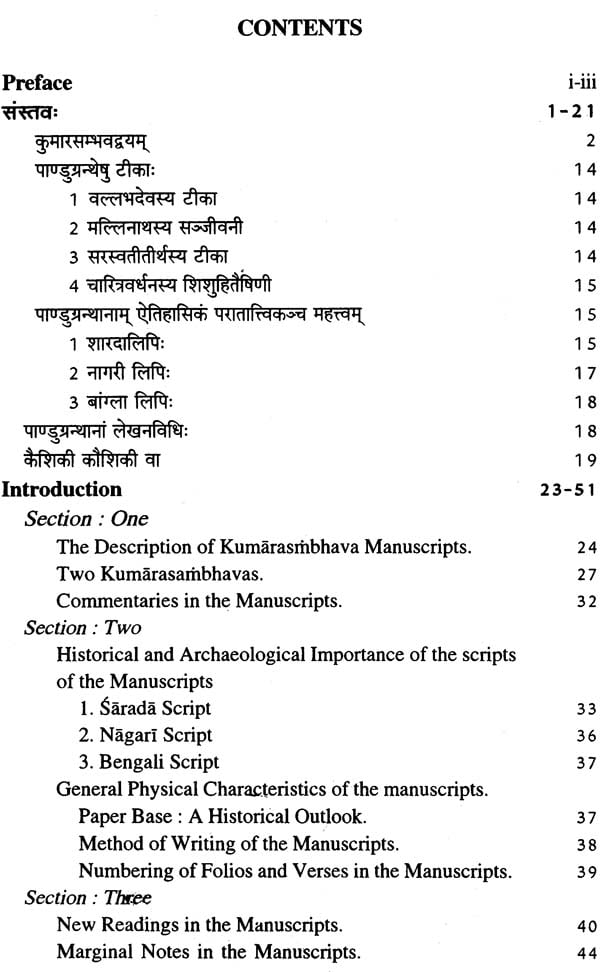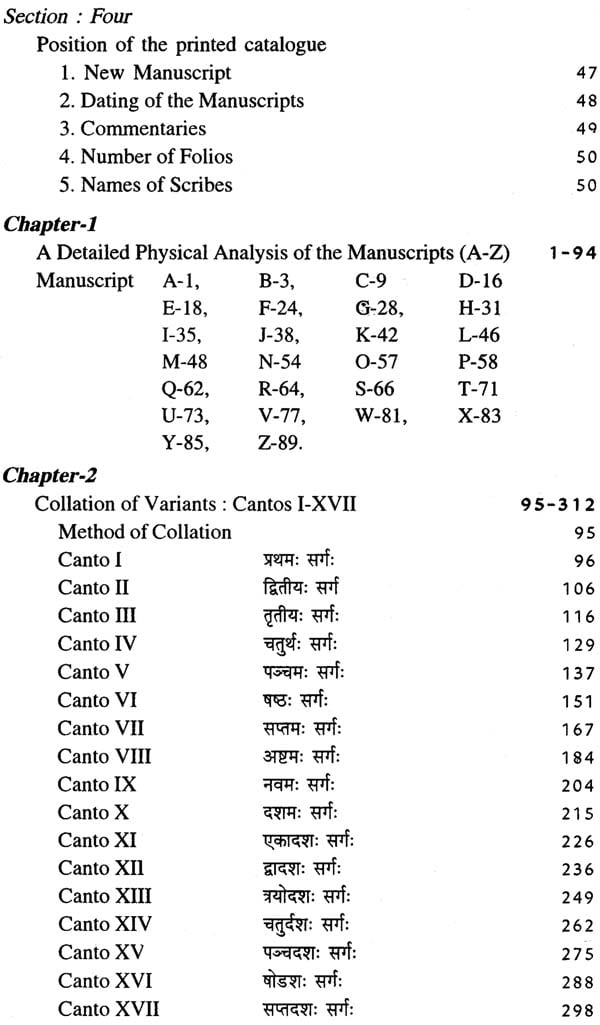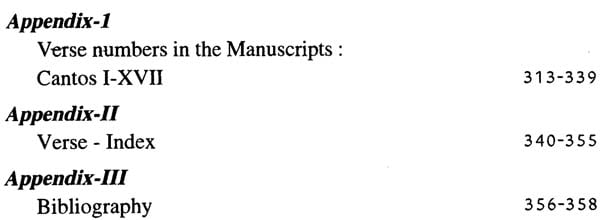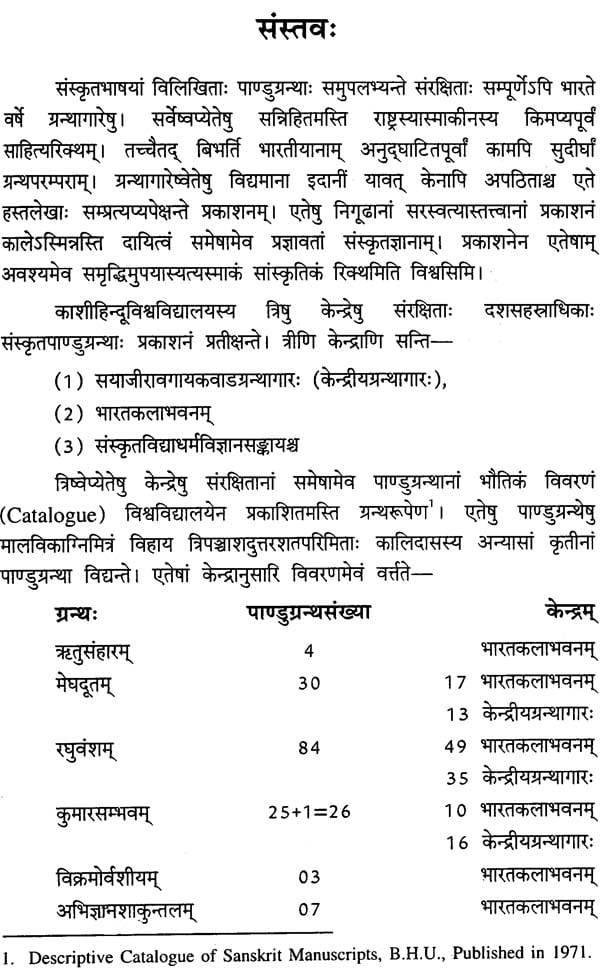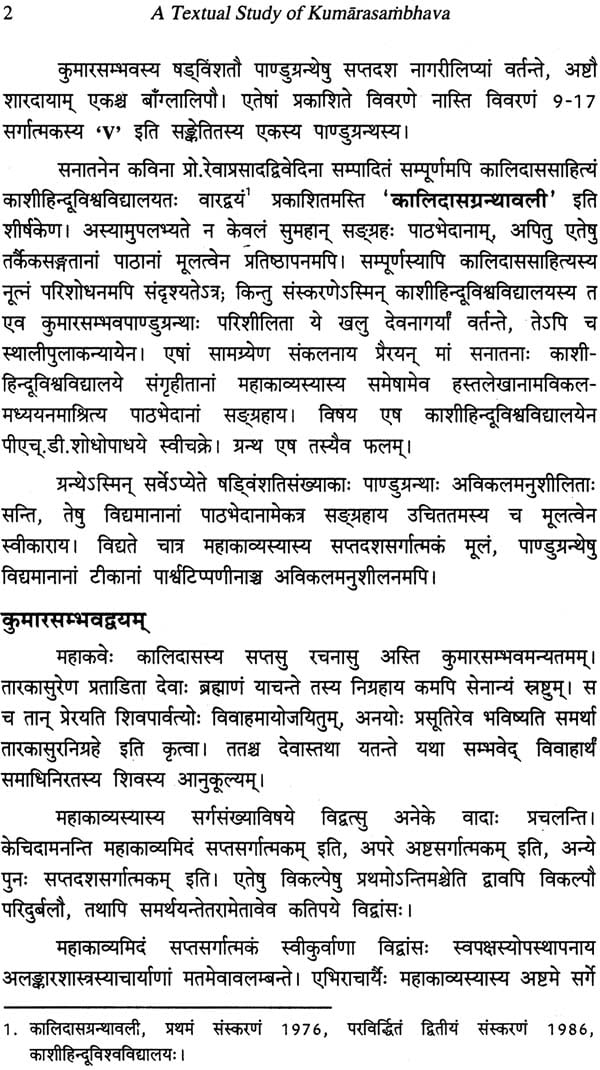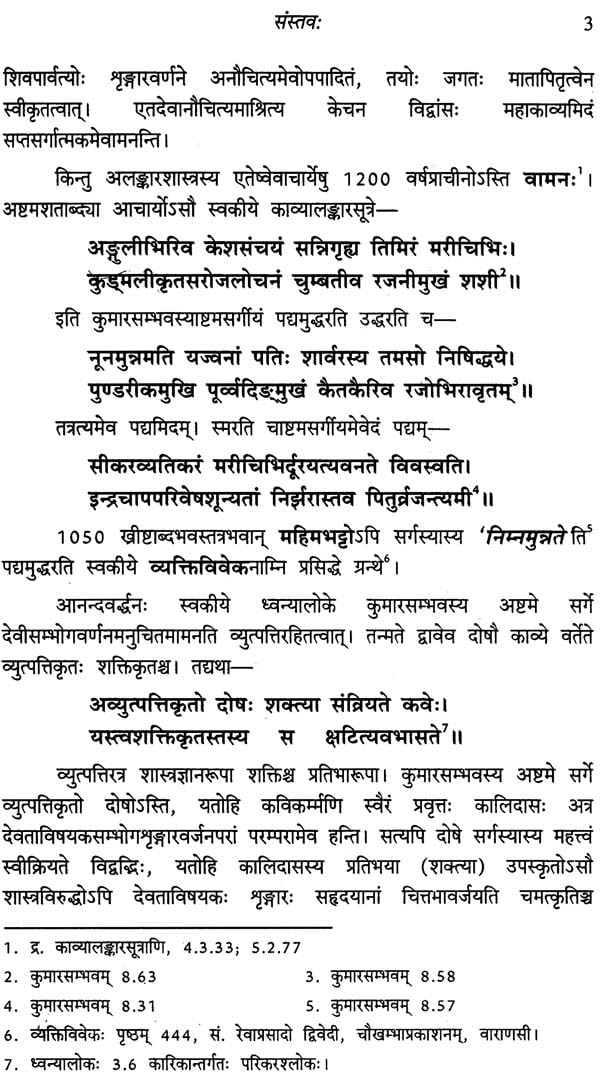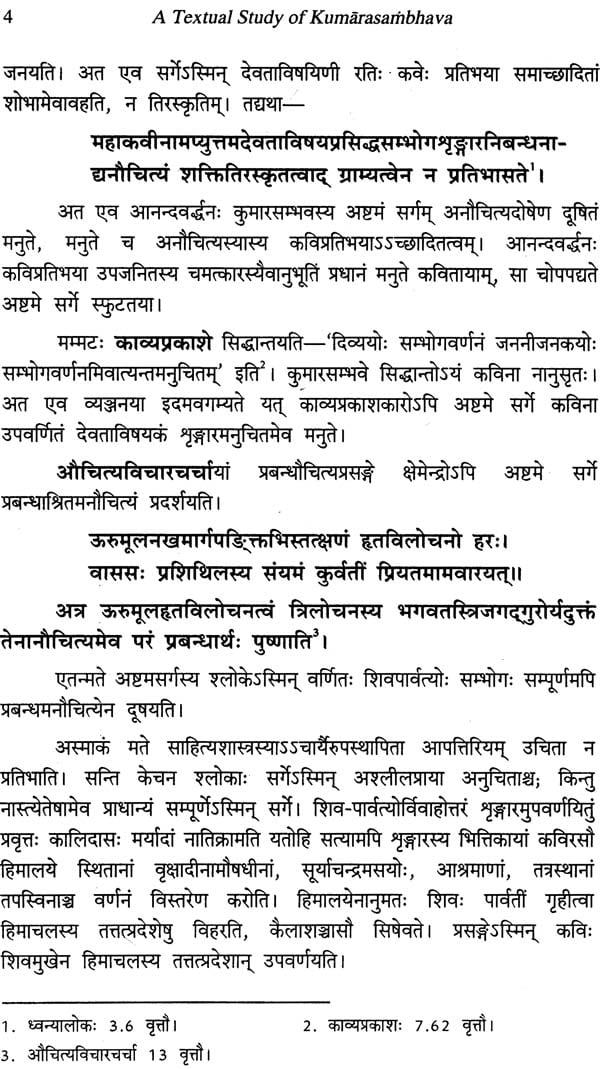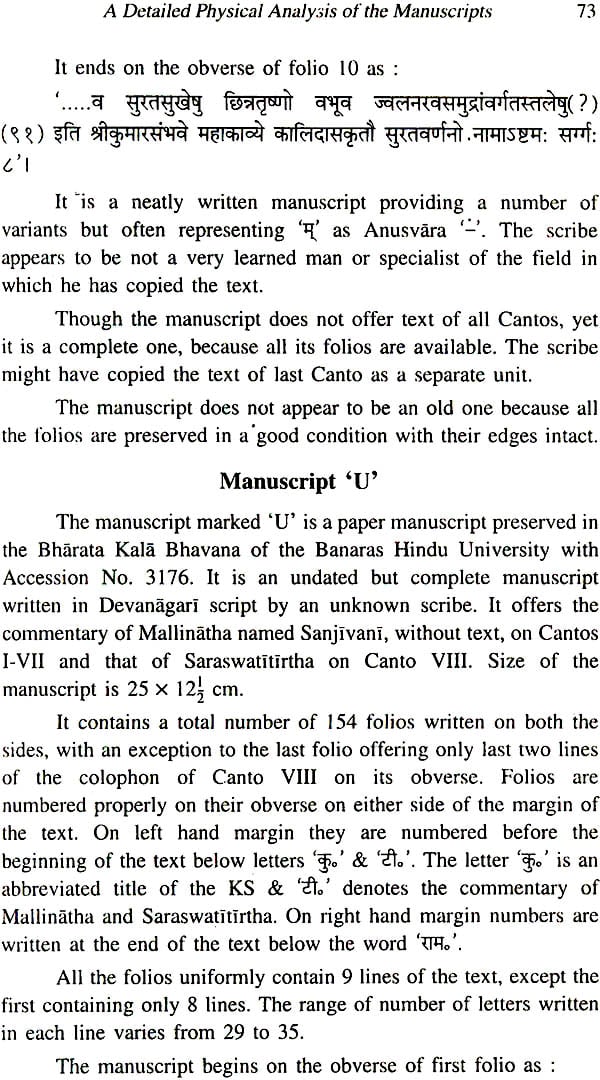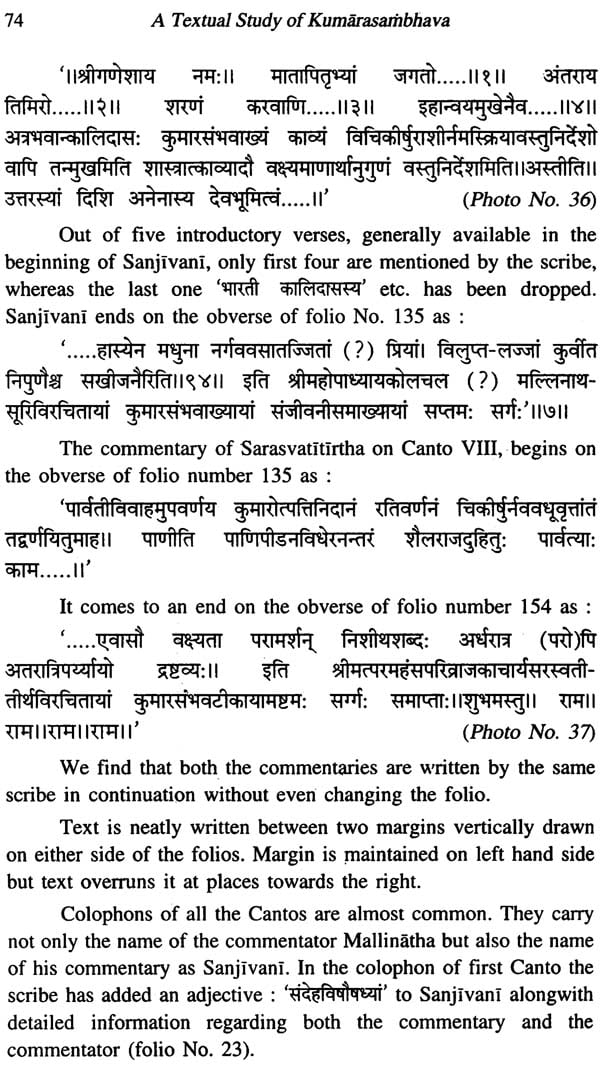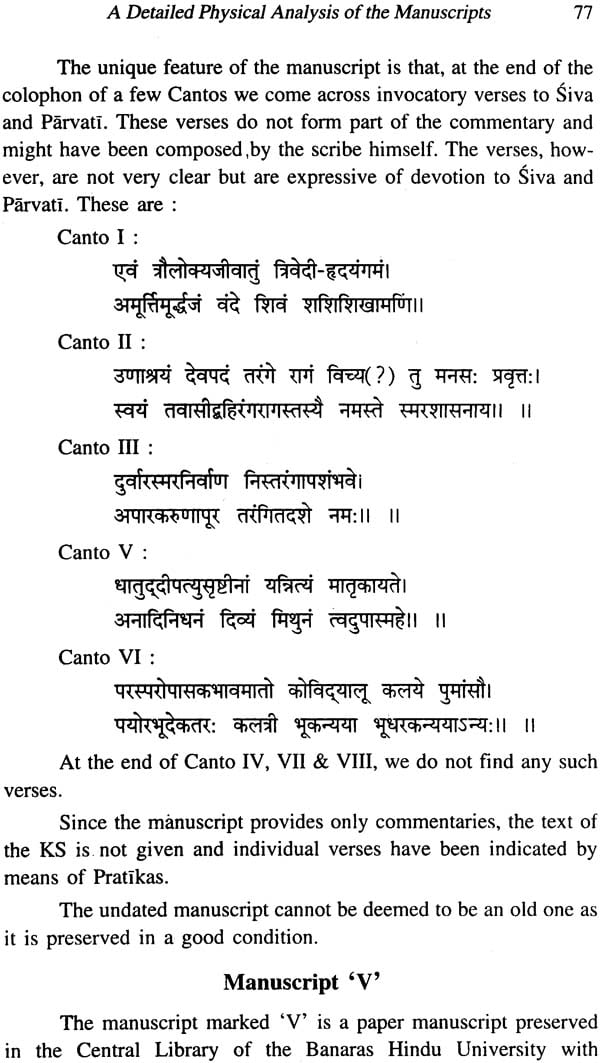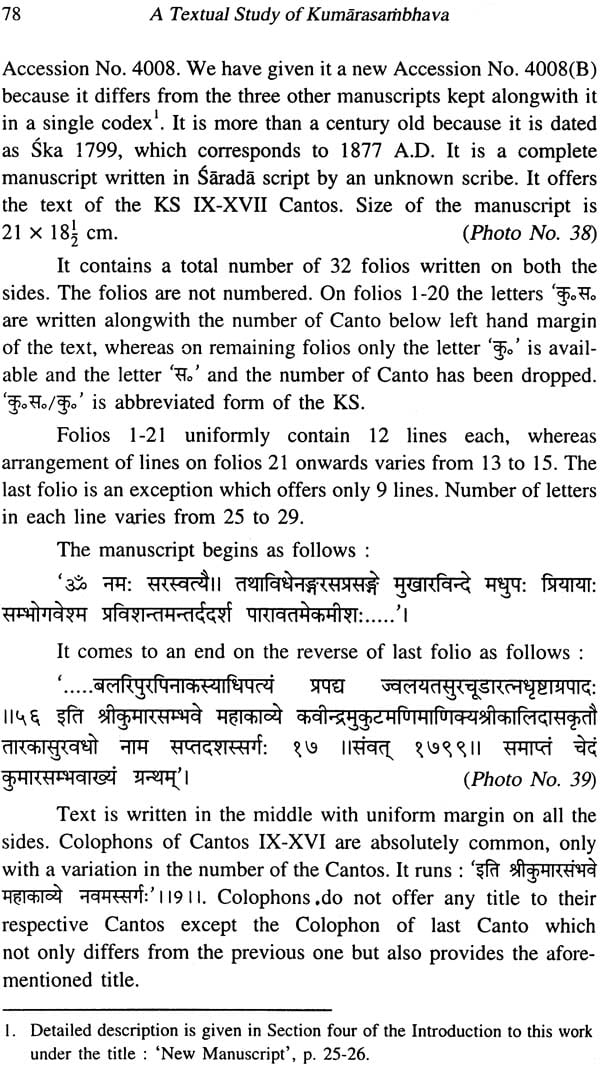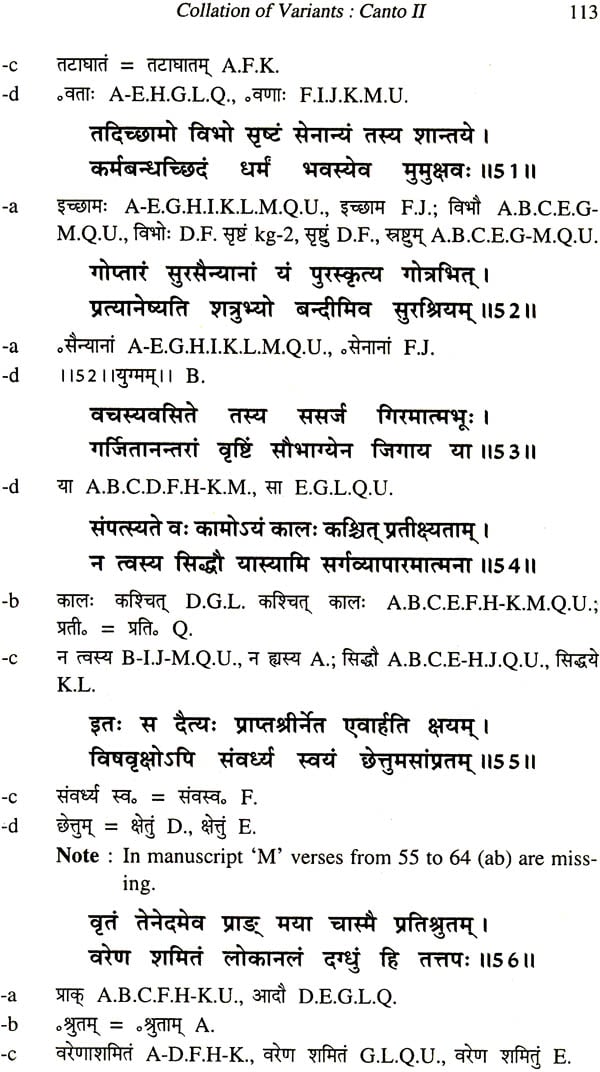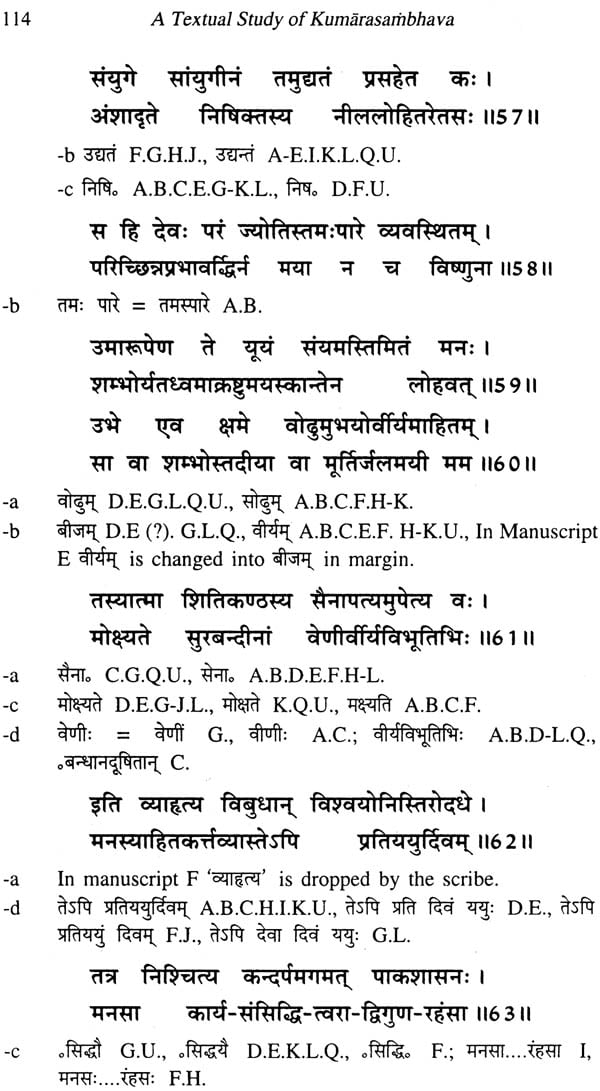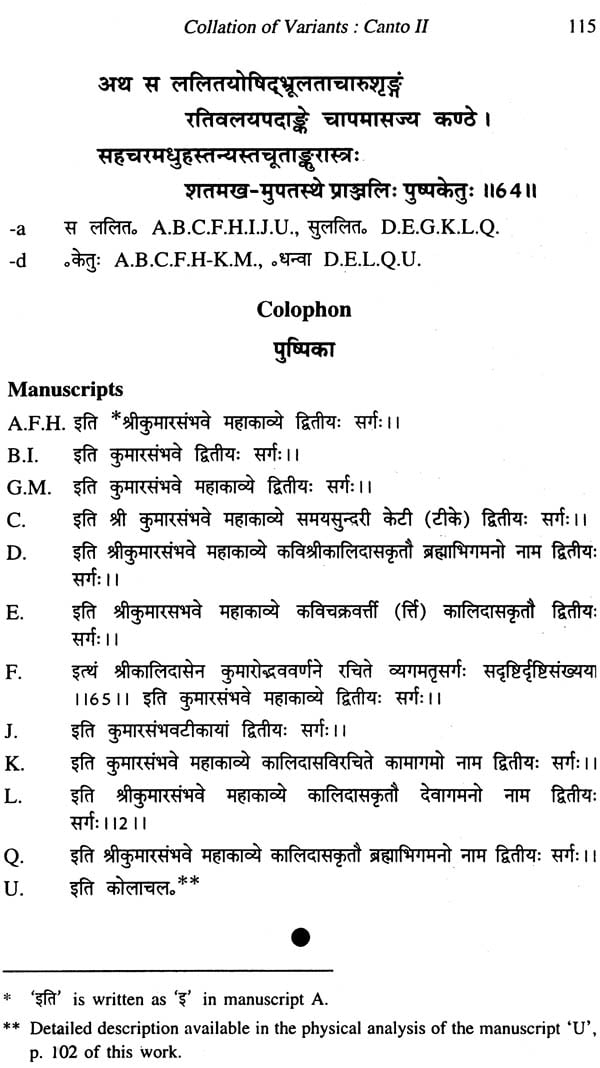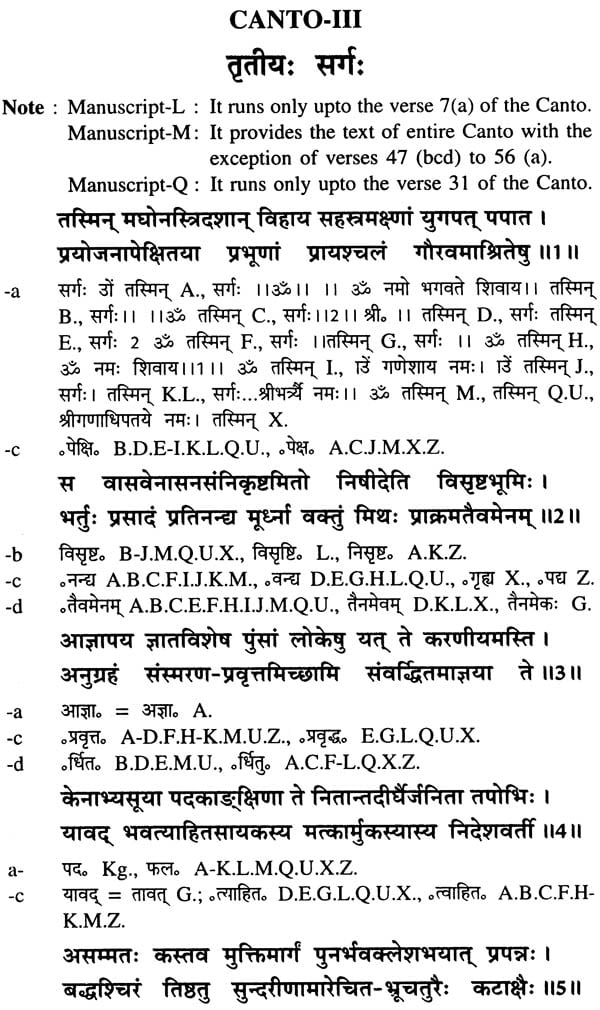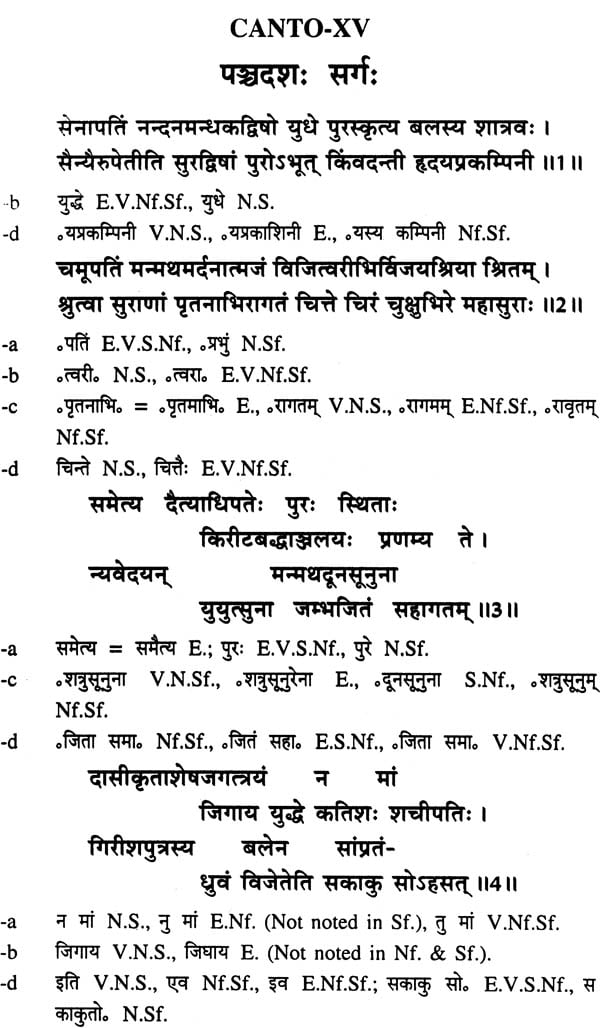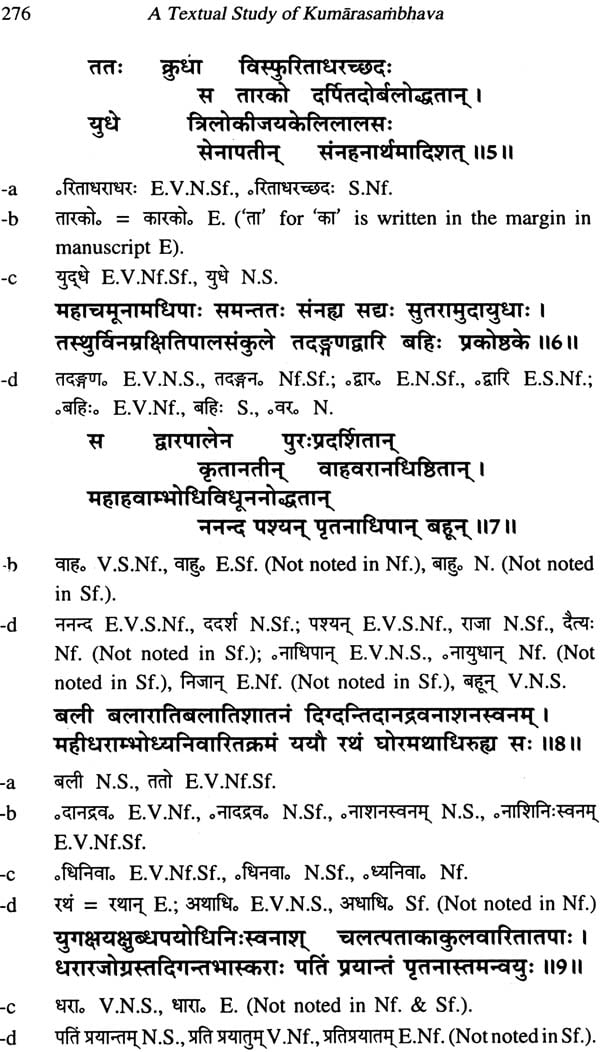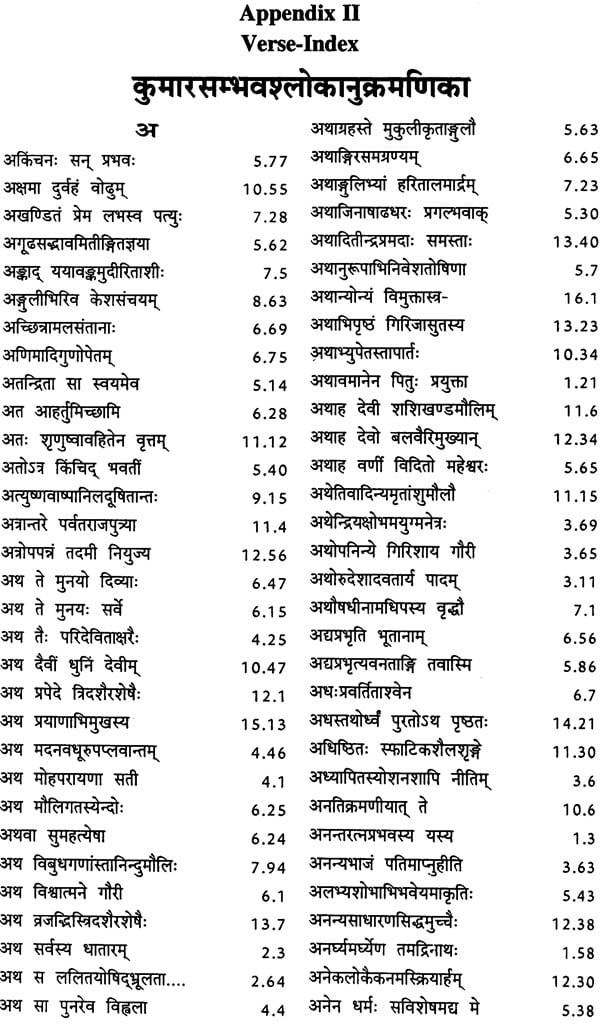
A Textual Study of Kumarasambhava
Book Specification
| Item Code: | NAG808 |
| Author: | Dr. Sadashiv Kumar Dwivedi |
| Publisher: | Sampurnanand Sanskrit University |
| Language: | Sanskrit and English |
| Edition: | 2007 |
| ISBN: | 817270187X |
| Pages: | 374 |
| Cover: | Hardcover |
| Other Details | 9.5 inch X 6.5 inch |
| Weight | 800 gm |
Book Description
Foreword
In the treasury of world literature the name of Kalidasa is not only known as a great poet or literator of his time but the great name Kalidasa is itself, an institution which has already crossed the boundaries of over two millennia and hopefully, will go to more millennia to come, with the same fragrance. Kalidasa is one of those all time greats of literature about whom every supervisor and guides have something to say common and specialized guides have enough to spell-out many un-commons. Since the days of Mallinatha to the present day time, the scholars of Sanskrit Sahitya have continuously added explanations and interpretations of Kalidasa Sahitya and still there are more possibilities to explore further.
Kalidasa and his creations Raghuvamsa, Kumarasambhava, Meghaduta, Abhijnanasakuntala and others have navigated the ethics and aesthetics of Oriental Societies. Despite of foreign invasions, infilteration of Bohemians of middle east and hard materialism of the west, Kalidasa is still untarnished. This could be possible only due to the radical wisdom and human sensibility of Kalidasa.
The present book ‘A Textual Study of Kumarasambhava’ by Dr. Sadashiv Kumar Dwivedi is the result of deep study made by Dr. Dwivedi, who was inspired by his illustrious father Prof. Rewa Prasad Dwivedi, the doyen scholar of Kalidasa literature. Dr. Sadashiv was guided and supervised by another colossal heavy weight of Kalidasa literature Prof. Vishwanath Bhattacharya who inculcated the paragonism of Kalidasa in Sadashiv and as an ardent researcher Sadashiv started the voyage in the ocean of kalidasa’s creation and could ultimately reach the El-dorado of his work due to his sincerity and devotion. The book is concerned with the Textual Study of the Manuscripts of Kumarasambhava and I am sure that this will obviously open an avenue for the students to know about the available manuscripts on Kalidasa’s Kumarasarnbhava and it will really be very helpful for the researchers in the days to come. The writer Dr. Sadashiv Kumar Dwivedi went through all the 26 manuscripts on Kumarasambhava available in various libraries of BHU. The resolution of the writer is ‘An extensive physical and textual analysis of these manuscripts have been carefully attempted and the variant reading of all of them have been completed and produced in full’
It is really very praiseworthy that Dr. Dwivedi has presented this book with his rational and narrative mind to pave a positive approach and alternative path in the field of such researches. I pray a long life to this pious motion. Let this book hit the minds of the readers, instead of hitting the stands.
Lastly, I must accord my sincere thanks to Dr. Harishchandra Mani Tripathi, Director, Publication Institute of our University and his total team for bringing-out this precious book which will give adequate light to all the researchers, students and readers.
Preface
Sanskrit manuscripts (Mss.) bear an invaluable heritage of the entire human race. They are unique as they preserve the best output, both creative and critical, of the Indian mind. The manuscripts are preserved in different centres of archaeological and literary importance in India and abroad. In India the Banaras Hindu University is one of those centres wherein a rich stock of old manuscripts of various Sanskrit treatises has been preserved.
The Kumarasarnbhava (KS) is one of the masterpieces of Kalidasa. Since the time of Banabhatta, i.e. 650 A.D., it has been admired by scholars and poets alike in glowing terms. It is only natural in views of the fact that Kalidasa is one of the greatest poets of India endowed with an outstanding poetic genius with distinctive characteristics.
In KS the simple puranic narrative of the union of Parvati and Siva, the supreme divine couple, finds a grand poetic treatment in the hands of Kalidasa who has depicted the emotion of love in its fullness elevating the same to sublime grandeur.
In the title ‘Kumarasarnbhava’ the term ‘Sambhava’ has many connotations. Usually the word denotes two meanings: (i) possibility, i.e. something which has not happened as yet but is likely to happen in future, and (ii) lexicographically the word is defined to mean birth, creation, production, prosperity etc.
In Canto I-VIII of the KS the former sense of the term seems to have been adopted by the poet and thus the poem should logically confine itself only to the depiction of Parvati from the birth to a fully grown woman, Sivas rejection of her, the burning of Karna by him, Parvatis winning of Siva through penance and her final union with Siva.
However, Cantos IX-XVII are based on the latter meanings of the word Sarnbhava and as such the poet has depicted the birth of Kumara, his assuming of the leadership of Indra’s army against Taraka and his vanquishing of Taraka.
The Indian literary tradition holds that the first eight Cantos, which narrate the story upto Parvati’ s union with Siva, complete Kalidasa’s poem because the narrative clearly hints the possibility of Kurnaras birth though it does not go into the details of Kumara’s martial activities. The remaining nine Cantos have been added later on by some other poet who seems to have taken the term Sarnbhava in the sense of the birth of Kurnara.
Both the parts of the KS (Canto I-VIII & IX-XVII) have been arranged sequentially in the manuscripts as well as in the printed editions but the difference between the two parts, in repspect of style and craftmanship, is too alarming to be glossed over.
The present work is chiefly aimed at making a textual study of the manuscripts of KS preserved only in Banaras Hindu University. The present writer has gone through all the manuscripts, 26 in number and has noted down all the variants available. An extensive physical and textual analysis of these manuscripts has been carefully attempted and the variant readings from all of them have been com- piled and produced in full. The present work is conceived as the next logical step to carry further the work done by M.M. Prof. Rewa Prasad Dwivedi on the KS under the title: ‘Kalidasagranthavali’ published in 1986 by the Banaras Hindu University.
I would like to record my grateful thanks to the authorities of the University Grants Commission of India and the Banaras Hindu University, who have provided me with all the facilities needed to compelte the work.
The present work is being published by the “Sampurnanand Sanskrit University” one of the greatest seats of Sanskrit Learning who has the biggest collection of precious sanskrit manuscripts. I am highly greateful to the former Vice-Chancellors of the University Prof. Ramamurti Sharma, Prof. Rajendra Mishra, the present Vice-Chancellor Prof. Ashok Kumar Kalia and the Director, Publication Institute, Prof. Harishchandra Mani Tripathi for their blessings and assistance that they extended for bringing this work out in a printed form.
Respectful gratitude will remain evergreen in my memory for my learned supervisor and teacher Prof. Biswanath Bhattacharya and my father Prof. Rewa Prasad Dwivedi, whose valuable guidance, inspiration and teaching of research methodology, to carry on the work, have been the chief cause of its completion.
My humble thanks are also due to all my teachers of the Department of Sanskrit whose blessings and encouragement have been a constant source of inspiration to me during my research work.
The librarians of Sayaji Rao Gaekawad Library (Central Library) and Bharata Kala Bhavana of Banaras Hindu University have extended their full cooperation in making me available photocopies of all the manuscripts of the KS, preserved in both the centres. To them I record my sincere thanks.
My mother Late Smt. Drupadakumari Dwivedi, my elder brother Dr. Sarvajfia Kumar Dwivedi (U.S.A.) and my younger sister Dr. Shobha Mishra, Lecturer, Sanskrit Deptt., S.D. College, Kanpur, have always extended their cooperation to overcome all the impediments and vicissitudes that came in the way of completing this work. I express my loving regards and affection to them.
In the end, I humbly hope that this sincere labour will prove fruitful.
Sample Pages
